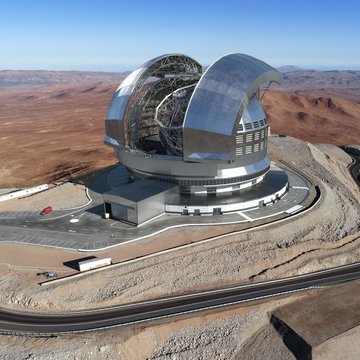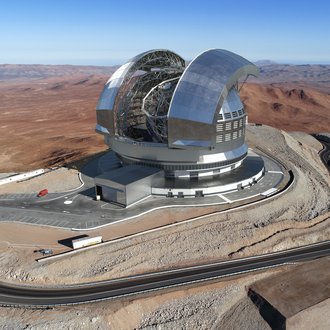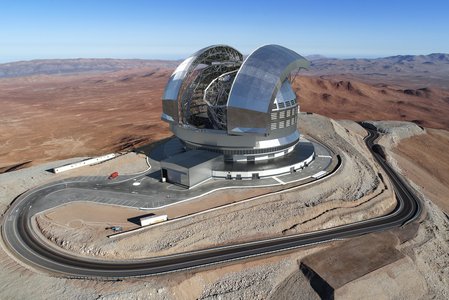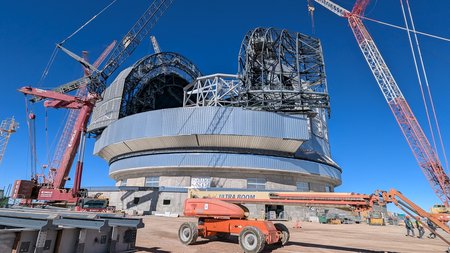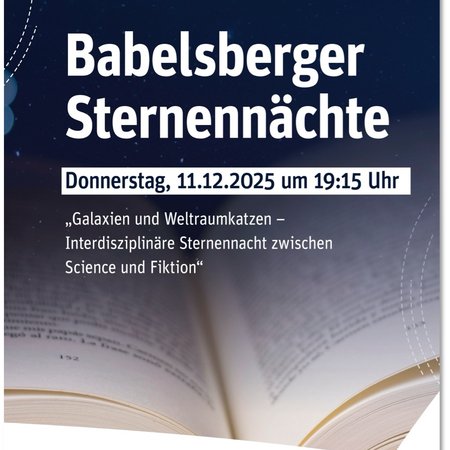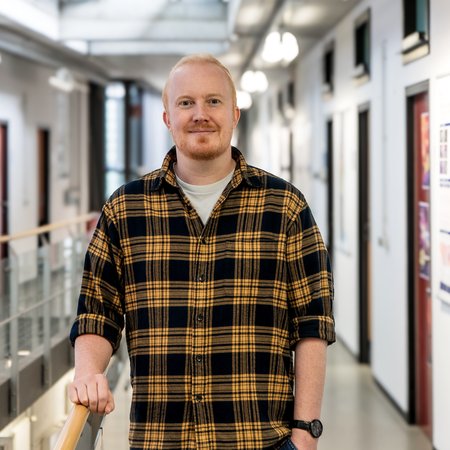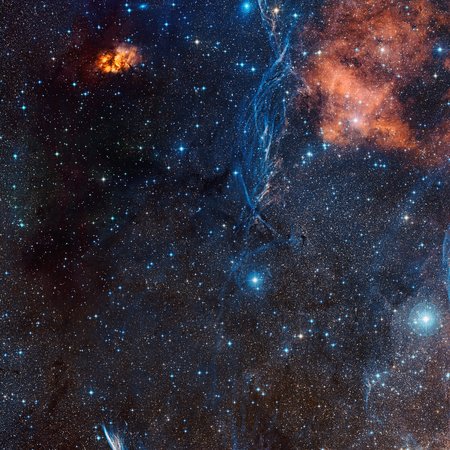Virtual lecture: Babelsberg Starry Night on 17th July 2025
The next talk of the Virtual Babelsberg Starry Nights of the Leibniz Institute for Astrophysics Potsdam (AIP) on the topic "ANDES – high resolution spectrograph for the ELT " (in German) by Dr. Michael Weber will be broadcast on the YouTube channel “Urknall, Weltall und das Leben” (Big Bang, Universe and Life) from Thursday, 17.07.2025.
Dr Michael Weber’s lecture on “ANDES – high resolution spectrograph for the ELT” from the Babelsberg Starry Nights series will be online on Thursday at 8 pm.
ESO's Extremely Large Telescope (ELT) is currently being built in Chile. ANDES is the high-resolution spectrograph for this large telescope, which will enable high-precision and stable spectroscopy from ultraviolet light (350 nm) to the near infrared (approx. 2 µm). The AIP in Potsdam is responsible for developing and building the optical-ultraviolet arm of the ANDES spectrograph, called ANDES-UBV. Dr Michael Weber is head of the ‘High Resolution Spectroscopy and Polarimetry’ section at the AIP. In his presentation, he will give a brief outline of spectroscopy in general and high-resolution echelle spectroscopy in particular and introduce the ANDES project. He will also discuss which especially interesting scientific can be investigated with the high-resolution spectrograph in the future.
Usually on the 3rd Thursday of each month, starting at 8 p.m., the lectures of the Babelsberg Starry Nights become available at
https://www.aip.de/babelsberger-sternennaechte
and via the YouTube channels "Urknall, Weltall und das Leben" (Big Bang, Universe and Life) and "videowissen" and can be viewed afterwards at any time.
The next talk of the Virtual Babelsberg Starry Nights of the Leibniz Institute for Astrophysics Potsdam (AIP) on the topic "ANDES – high resolution spectrograph for the ELT " (in German) by Dr. Michael Weber will be broadcast on the YouTube channel “Urknall, Weltall und das Leben” (Big Bang, Universe and Life) from Thursday, 17.07.2025.
Dr Michael Weber’s lecture on “ANDES – high resolution spectrograph for the ELT” from the Babelsberg Starry Nights series will be online on Thursday at 8 pm.
ESO's Extremely Large Telescope (ELT) is currently being built in Chile. ANDES is the high-resolution spectrograph for this large telescope, which will enable high-precision and stable spectroscopy from ultraviolet light (350 nm) to the near infrared (approx. 2 µm). The AIP in Potsdam is responsible for developing and building the optical-ultraviolet arm of the ANDES spectrograph, called ANDES-UBV. Dr Michael Weber is head of the ‘High Resolution Spectroscopy and Polarimetry’ section at the AIP. In his presentation, he will give a brief outline of spectroscopy in general and high-resolution echelle spectroscopy in particular and introduce the ANDES project. He will also discuss which especially interesting scientific can be investigated with the high-resolution spectrograph in the future.
Usually on the 3rd Thursday of each month, starting at 8 p.m., the lectures of the Babelsberg Starry Nights become available at
https://www.aip.de/babelsberger-sternennaechte
and via the YouTube channels "Urknall, Weltall und das Leben" (Big Bang, Universe and Life) and "videowissen" and can be viewed afterwards at any time.
Images
Artist’s impression of the Extremely Large Telescope.
Big screen size [1000 x 666, 160 KB]
Original size [4000 x 2667, 2.5 MB]
The construction site of the ELT in July 2025.
Big screen size [1000 x 562, 150 KB]
Original size [4032 x 2268, 1.6 MB]
